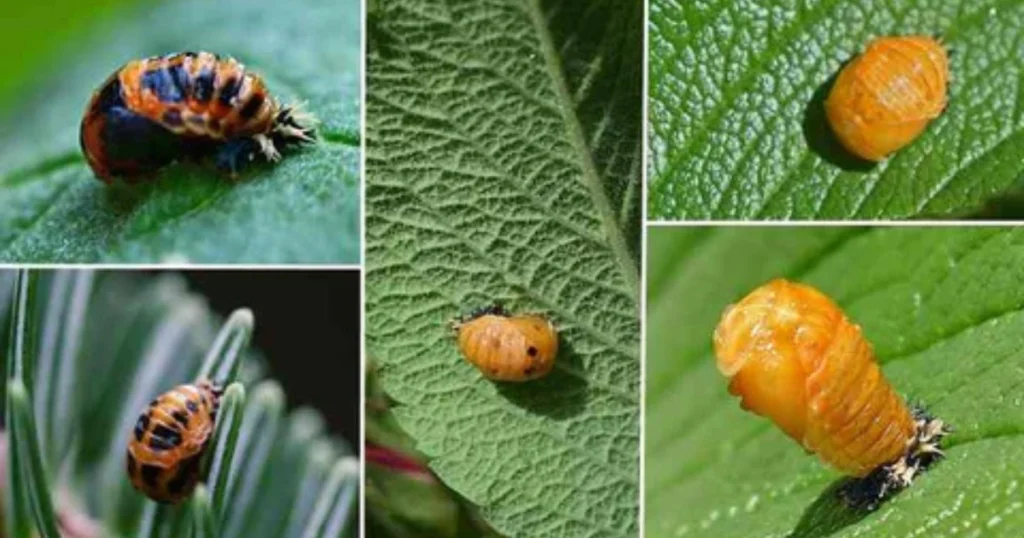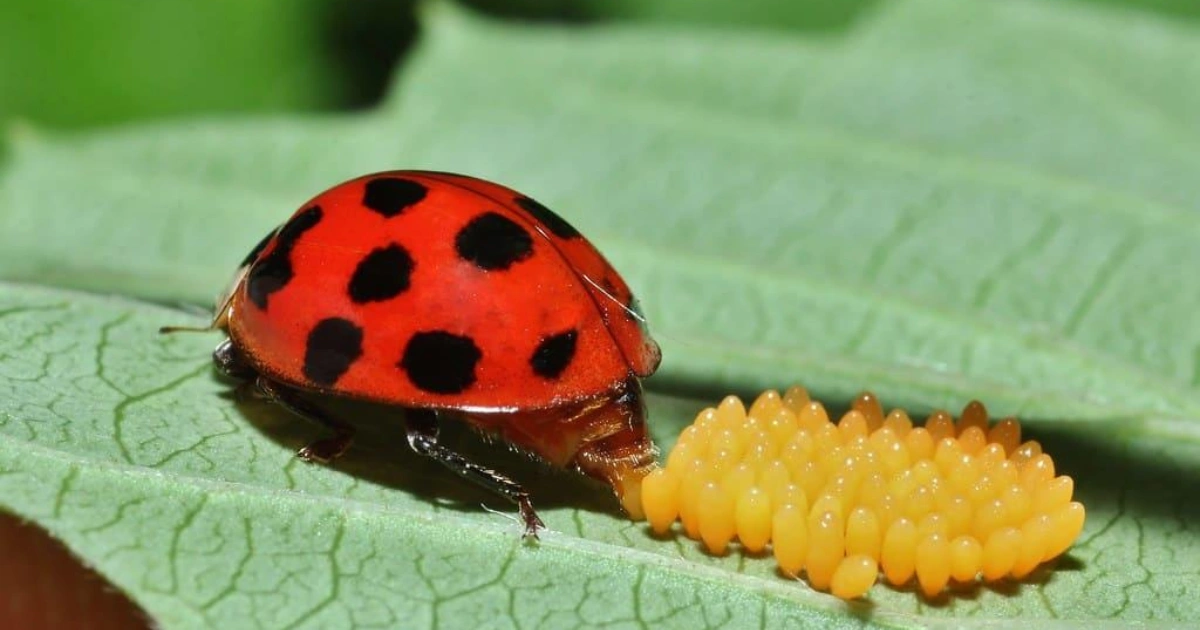Ladybugs—also known as ladybirds or lady beetles—play a vital role in natural pest control and ecosystem health. Learning about the ladybug life cycle—from egg to adult—reveals how these insects develop and why they’re considered beneficial to gardeners worldwide.

Understanding the Ladybug Life Cycle
Ladybugs experience complete metamorphosis, progressing through four distinct stages: egg, larva, pupa, and adult. Each phase is essential to their growth and their effectiveness as garden guardians.
Egg Stage: Tiny Beginnings
Female ladybugs deposit clusters of 5 to 50 small, yellow or orange eggs on the underside of leaves—usually near aphid colonies. This strategic placement ensures newly hatched larvae have immediate access to food. The egg stage typically lasts between 2 and 10 days, depending on temperature and humidity conditions.
Larval Stage: Efficient Pest Hunters
After emerging, larvae appear completely different from their adult form—elongated and spiny. During this 2 to 4-week phase, each larva consumes hundreds of aphids, scale insects, and other soft-bodied pests. Larvae progress through four developmental stages (instars), growing significantly before transitioning to the pupal stage.
Pupal Stage: Transition in Progress
Once larvae reach maturity, they attach themselves to a leaf or stem and enter the pupal stage—a period of dramatic transformation. Inside a protective case, their larval structures break down and reorganize into adult bodies. This phase usually spans 7 to 15 days.
Adult Stage: The Iconic Beetle
Emerging from the pupa, the adult ladybug starts with a soft, pale body. Over the next few days, the exoskeleton hardens and characteristic spots and colors emerge. Fully mature adults begin hunting pests and eventually lay their own eggs, continuing the cycle. Many adults live several months, and those that overwinter may survive for up to a year.
Why the Life Cycle Matters to Gardeners
Understanding the ladybug life cycle helps gardeners support each developmental stage intentionally:
- Natural pest control: Encouraging larvae and adults helps reduce aphid populations.
- Habitat planning: Creating sheltered spaces and planting appropriate flora encourages reproduction.
- Timing interventions: Avoid using broad-spectrum pesticides when eggs or larvae are present.
How to Foster Ladybug Populations
Provide pollen- and aphid-attracting plants such as dill, fennel, and yarrow. Avoid using chemical pesticides that can harm beneficial insects. Leave leaf litter, logs, or sheltered areas to support overwintering adults. Consider introducing native species like Adalia bipunctata or Coccinella septempunctata, which adapt well to various garden environments.
Benefits of Ladybugs in the Garden
Ladybugs are low-maintenance allies for garden health. Both larvae and adults prey on common pests such as aphids, thrips, and mites, helping reduce plant damage naturally. Their presence enhances ecological balance, reduces the need for chemical treatments, and offers an inspiring opportunity to observe insect biology in action.
Frequently Asked Questions
How long does each stage of the ladybug life cycle last?
Eggs typically take 2 to 10 days to hatch. The larval stage lasts around 2 to 4 weeks. Pupation requires 7 to 15 days. Adults may live several months or up to one year under favorable conditions.
Do adult ladybugs eat pests as well?
Yes, both larvae and adults feed on aphids and other soft-bodied insects. Larvae consume more pests per day than adults.
Can ladybugs survive winter indoors?
Ladybugs usually overwinter outdoors in sheltered locations such as leaf litter or bark piles. Indoor environments are often too warm and light for successful hibernation.
Are all ladybug species’ life cycles the same?
Yes, all ladybugs undergo complete metamorphosis, but timing and behavior can vary based on species and local climate.
Should gardeners feed ladybugs?
Natural prey like aphids is the best food source. Supplementing with flowering plants is useful if natural food is scarce. Avoid sugar solutions or artificial feeds.
Supporting Ladybugs and Garden Ecology
Providing diverse planting and shelter supports all life stages of ladybugs. Regular observation helps confirm that eggs hatch, larvae feed, pupae develop, and adults emerge successfully. Recording sightings in a garden journal encourages deeper engagement with nature and enhances ecological awareness.
Internal Link Suggestions
- Refer to Natural Insect Repellents You Can Make at Home for complementary pest control strategies
- Explore Best Plants for Purifying Indoor Air to support wider beneficial insect populations
- Read DIY Herbal Remedies for Cold and Flu Relief for plant-based wellness ideas that align with ecological gardening
External Resource Suggestions
- National Geographic – Ladybug Behavior and Identification
- Cornell University – Biological Pest Control with Lady Beetles
- University of Maryland Extension – Lady Beetle Life Cycle and Benefits
Main keyword: ladybug life cycle
LSI/NLP keywords used: stages of ladybug development, ladybug metamorphosis, ladybug larvae pest control, ladybug pupal stage, adult ladybug lifespan, garden beneficial insects, supporting ladybugs, lady beetle habitat
Internal link suggestions:
- Natural Insect Repellents You Can Make at Home
- Best Plants for Purifying Indoor Air
- DIY Herbal Remedies for Cold and Flu Relief
External link suggestions:
- National Geographic – Ladybug Behavior and Identification
- Cornell University – Biological Pest Control with Lady Beetles
- University of Maryland Extension – Lady Beetle Life Cycle and Benefits


59412 948109my grandmother is always into herbal stuffs and she always say that ayurvedic medicines are the very best stuff 168133
برای دوستانی که به دنبال یک راهکار مطمئن برای وریفای حساب در بروکرهای فارکس هستند، پیشنهاد میکنم خدمات شوپی را بررسی کنند. این مجموعه به صورت تخصصی، وریفای قانونی حساب های فارکس را با مدارکی ارائه میدهد که کاملاً معتبر بوده و به نام خودتان صادر میشود. این روش دائمی است و ریسک بلاک شدن حساب شما را به صفر میرساند. کیفیت و پشتیبانیشان واقعاً عالی است.
https://t.me/s/Starda_officials